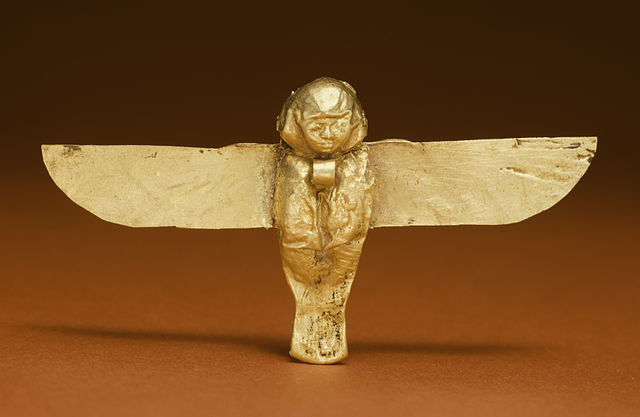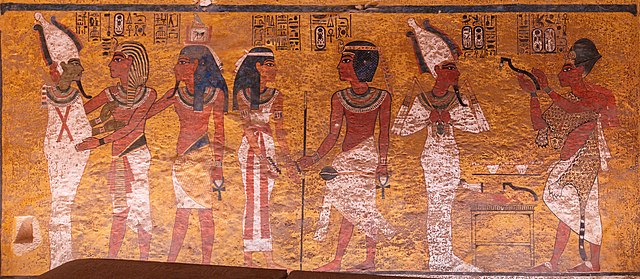Ancient Egyptian conception of the soul
The ancient Egyptians believed that a soul was made up of many parts. In addition to these components of the soul, there was the human body.
Fragment from Egyptian Book of the Dead
An ushabti box, Ptolemaic Period. On display at the Rosicrucian Egyptian Museum in San Jose, California. RC 623
This golden bꜣ amulet from the Ptolemaic Kingdom would have been worn as an apotropaic device. Walters Art Museum, Baltimore.
Scenes from the north wall of the burial chamber of Tutankhamun. On the left side, Tutankhamun, followed by his ka, embraces the god of the dead Osiris.
In many religious and philosophical traditions, the soul is the non-material essence of a person, which includes one's identity, personality, and memories, an immaterial aspect or essence of a living being that is believed to be able to survive physical death. The concept of the soul is generally applied to humans, although it can also be applied to other living or even non-living entities, as in animism.
Artist’s depiction of a human soul leaving the body
The souls of Pe and Nekhen towing the royal barge on a relief of Ramesses II's temple in Abydos
Depiction of a soul being carried to heaven by two angels by William Bouguereau
Depiction of the soul on a 17th century tombstone at the cemetery of the Old Dutch Church of Sleepy Hollow








